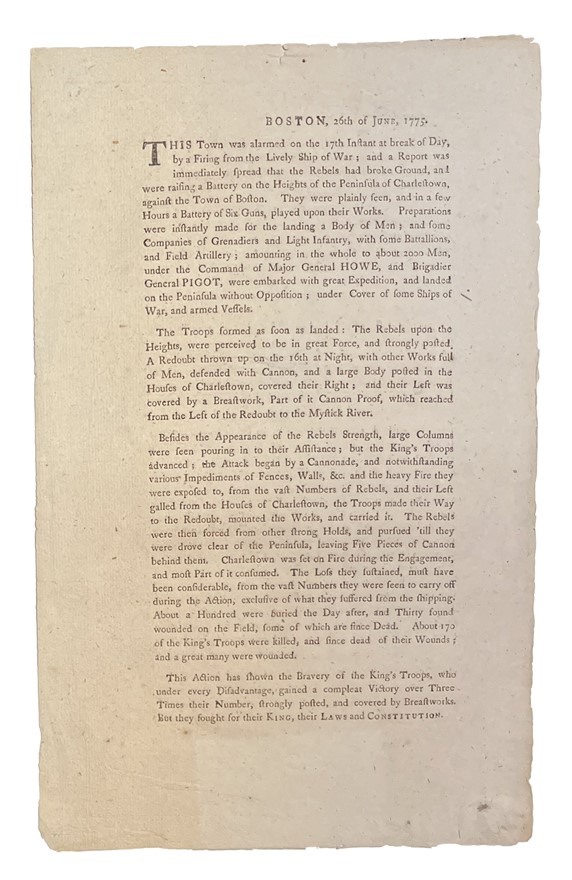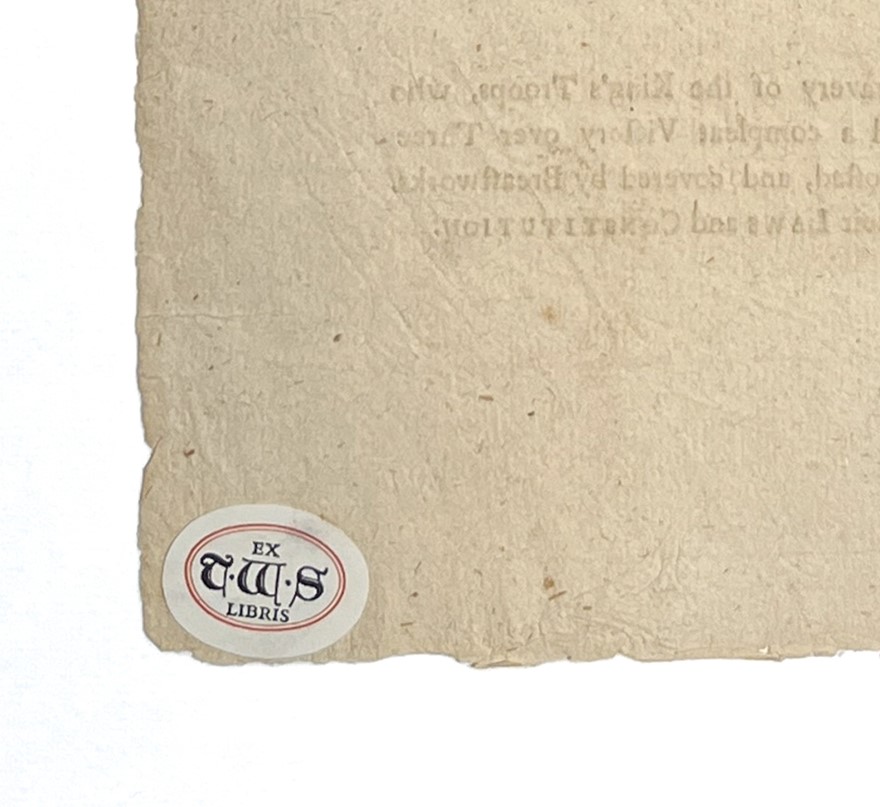Boston 26th June 1775.
REVOLUTIONARY WAR ; GAGE Thomas attrib (1775].)
£17500.00
Please contact us in advance if you would like to view this book at our Curzon Street shop.
THE STREETER COPY
Letterpress broadside measuring 360 by 220mm. A fine copy, ex-lib label to verso. In an archival mount. [Boston, John Howe,
A fine copy with distinguished provenance. This copy belonged to Thomas W. Streeter and bears his discreet bookplate on the verso.
This rare account of the Battle of Bunker Hill is attributed to General Thomas Gage (c.1719-1787) as John Howe similarly printed his narrative of Lexington and Concord, A Circumstantial Account of an Attack that happened on the 19th of April 1775, on his Majesty's Troops. (Boston, 21 April, 1775). Having served as commander-in-chief for North America, in 1774 Gage was appointed Governor of Massachusetts and thus was both participant in, and recorder of, the rising tensions between England and America.
The opening skirmishes of the Revolutionary War were terrible for the British and while the King granted Gage's request for additional troops, along with them sailed generals William Howe, Henry Clinton, and John Burgoyne. Gage understood "his days were numbered. But he saw a chance in June to teach the rebels a lesson when they fortified a hill on Charlestown peninsula, opposite Boston. Instead of using the navy to cut off his enemy at Charlestown neck, he ordered Major-General Howe to attack frontally. Meeting ferocious resistance, Howe carried the rebel works at the cost of well over 1000 casualties in an attacking force of about 2500. Gage reported privately to Barrington that 'These People Shew a Spirit and Conduct against us, they never shewed against the French'" (ODNB).
Printed just nine days after the Battle of Bunker Hill, the broadside describes the action under Generals Howe and Pigot, emphasising the bravery of British troops throughout: "notwithstanding various Impediments of Fences, Walls, &c. and the heavy Fire they were exposed to, from the vast Numbers of Rebels, and their Left galled from the Houses of Charlestown, the Troops made their Way to the Redoubt, mounted the Works, and carried it. The Rebels were then forced from other strong Holds, and pursued 'till they were drove clear of the Peninsula, leaving Five Pieces of Cannon behind them."
While the action is reported accurately, troop numbers and casualties are somewhat distorted: "The Loss they [the Americans] sustained, must have been considerable, from the vast Numbers they were seen to carry off during the Action. … About a Hundred were buried the Day after, and Thirty found wounded on the Field, some of which are since Dead. About 170 of the King's Troops were killed, and since dead of their Wounds; and a great many were wounded." The British casualties were about six times the figure listed here.
The text continues: "This Action has shown the Bravery of the King's Troops, who under every Disadvantage, gained a compleat Victory over Three Times their Number, strongly posted, and covered by Breastworks." While American troops did outnumber the British, they were far more evenly matched than the "Three Times" listed here.
As with the best wartime propaganda, it concludes with a rallying cry: "But they fought for their KING, their LAWS and CONSTITUTION."
Evans 13842; Reese, The Revolutionary Hundred 32; Streeter sale 760.
Stock Code: 247607





